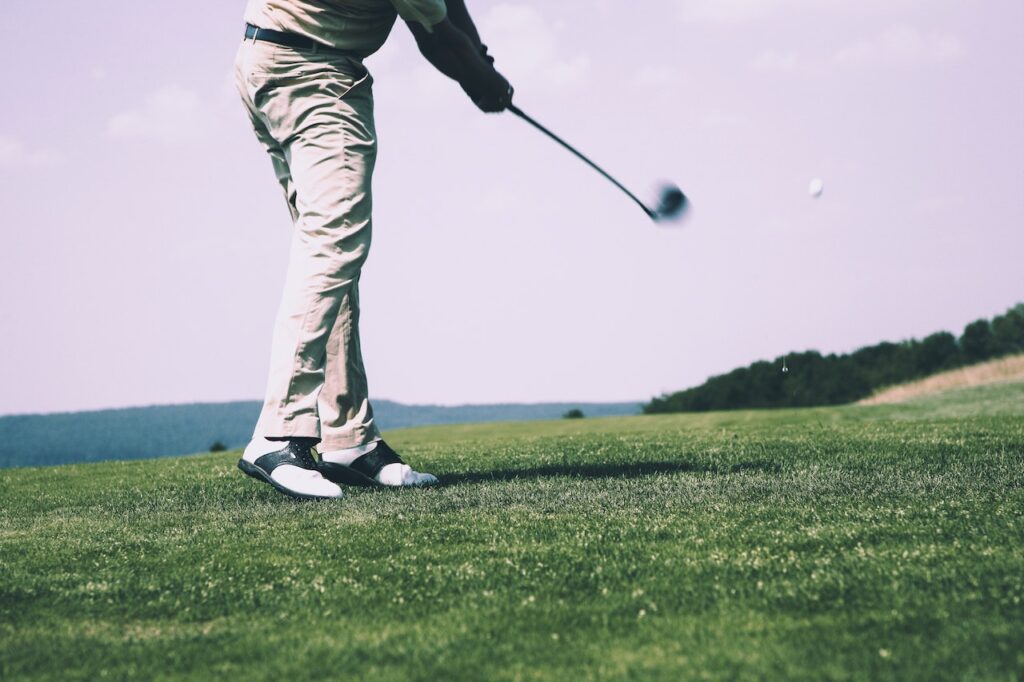Benefits of making a wooden golf putteren golf putter? It might seem like a daunting task, but with the right materials and steps, you’re well on your way towards creating your masterstroke!
Importance of choosing the right golf putter
Firstly, let’s talk about the significance of having the perfect golf putter. Putter plays an essential role in your golf equipment arsenal. It has a direct impact on your gameplay. Having the right putter not only boosts your confidence on the green but also improves your overall performance.
Benefits of making a wooden golf putter
1.Create to Suit: The beauty of crafting your own wooden putter is in the customization. You can design every detail to suit your style and suit your comfort.
2.Pride of Craftsmanship: There’s a certain pride and satisfaction that comes from creating your own golf equipment. This could lead to a boost in confidence and performance on the golf course.
Let’s start by gathering some materials: A block of hardwood (maple or cherry), stainless steel rod, epoxy, and some essential woodworking tools such as a saw, chisels, sandpaper, and a lathe.
Here’s the process:
- Design Shape: Start by designing the shape of your putter. Draw the shape on the block of wood, ensuring the design is symmetrical.
- Cut Shape: Next, use a saw to cut the wood along your drawn shape.
- Carve and Polish: Use chisels to create finer details, then sandpaper for a smooth finish.
- Insert Rod: Drill a hole in the top of the club head to insert the stainless steel rod. Use epoxy to secure it.
Voila, you’re now the proud craftsman of your very own wooden golf putter! Remember, practice and patience are key to perfecting this craft. Enjoy the process!
Materials and Tools Needed
Constructing your own wooden golf putter can be a rewarding way to connect with the timeless spirit of the sport. Plus, it also means creating a golfing accessory that is uniquely suited to your grip, style, and personality. But first, you need the right materials and tools.
Selection of suitable wood
Firstly, select the wood for your putter head. Typically, hardwoods like maple, ash, or hickory are best since these can endure the impact of hitting a golf ball. While aesthetics play a part in the selection process, the emphasis should be on the durability and robustness of the material.
The handle or grip area (also known as the “shaft” of the golf club) is another opportunity to show off beautiful wood. A complementary hardwood choice will marry well with your chosen head material.
Essential tools required for the project
Here is where your handiness comes into play! Your tool belt should contain:
- A band saw or jigsaw to cut the wooden block into the basic putter shape.
- A drill press to create the hole for the shaft.
- A chisel and mallet for further shaping and detailing.
- Sandpaper of varying grits, starting with coarse and working your way down to a fine grit for the final finish.
- Wood glue to secure the club head to the shaft.
- A wood finish – whether it’s a stain, paint, or clear lacquer – that will protect your club and enhance the wood’s natural beauty.
Armed with these tools and materials, you are all set to embark on this rewarding DIY project. Happy crafting!
Designing the Putter

A wooden golf putter isn’t just a playing tool, it’s a personal extension of your golf game. If you’re thinking about creating your own, you’re on the intriguing journey of blending tradition with personal style.
Factors to consider in designing a wooden putter
Designing a manageable and functional wooden putter requires careful consideration. First, you have to think about material selection. Although wood is the main material, you need to consider different types of woods, such as ash, hickory, or maple. Their densities vary and so will the feel and performance of the putter.
Next comes the putter head design. Opt for a design that improves alignment or one with a higher moment of inertia to enhance stability during your swings.
Also, ponder over the putter length. This should be determined by your height and the style of your stroke. The rule of thumb here; the putter should be long enough to allow you to maintain a comfortable stance.
Finally yet importantly, consider weight distribution. It plays a significant role in how the putter feels during the strokes, with consequences on distance control and accuracy.
Customization options for personal preference
Customizing your putter brings out the essence of woodworking, allowing you to infuse personal touches to suit your style and preferences. You could engrave your initials or tweak the grip style for a comfortable stroke. If you’re an old soul, try a vintage finish to give your wooden putter an antique look. And if you love all things bright and shiny, you can ‘lacquer it up’ for that glossy look.
Remember, the ultimate goal is to create a putter that reflects both your play style and your personality, enhancing your overall golfing experience. Don’t be afraid to get creative and have fun! After all, it’s your game, your rules.
Preparing the Wood
Enjoying a round of golf and hitting that golf ball just right with a club you created can be truly gratifying. Creating your wooden golf putter is truly doable and rewarding. Making your own wooden golf putter just requires some good quality wood, crafty skills, and time.
Steps for cutting and shaping the wooden components
Step 1: Start by choosing a hardwood, such as maple or oak. These types of wood are sturdy enough to handle the force of a golf swing.
Step 2: Cut the wood into three main parts: the head, the shaft, and the grip. The head of your putter should be about four inches long, one inch wide, and half an inch thick. The shaft length is purely down to personal comfort, but a standard length would be about 35 inches. The grip length should be roughly one-third the length of the shaft.
Step 3: After cutting, it’s time to shape the putter head. You can create your own custom design or copy the shape of a putter that you like. Mark the desired shape on your wooden block and start carving with your tools.
Sanding and smoothing the surfaces
Step 4: With the putter head shaped, the sanding phase begins. The goal during this phase is to smooth the surfaces and eliminate sharp or rough edges. Start with a coarse-grit sandpaper, then move on to a medium and finally a fine-grit paper to achieve a polished, smooth finish.
Step 5: Once sanded, apply a sealant to the wood to protect it from the elements and to add luster. Following these steps, you’ll have yourself a custom-made wooden golf putter. If you find this crafting activity enjoyable, think about taking it a step further with intricate designs and carvings. Happy golfing!
Assembling the Putter
Ah, there’s nothing like the satisfaction of creating your own wooden golf putter!
The overall process is not as daunting as it may seem. A little patience, some basic woodworking skills, and, of course, the right materials – that’s all you need.
Here is your blueprint for assembling a wooden golf putter:
Joining the different parts together
Pick the right wood: Consider using hardwood for the putter head due to its durability. Maple, walnut, or mahogany are perfect choices. You will also need a round wooden rod for the shaft – hickory or ash works great due to their resistant nature.
Shape your putter head: Be creative! Use a band saw or a coping saw to cut out your desired shape. Afterward, use a file or a sandpaper to smooth out any rough edges.
The Shaft: For the shaft, you need about a 35-inch long rod. The upper end should be slightly thinner than the lower end. This will allow you to comfortably grip the putter.
Securing the shaft and creating a sturdy connection
The connection: For a sturdy connection, you’ll need to drill a hole into the putter head. Make sure the hole aligns perfectly with the angle you want for your putter.
Insert Shaft: Apply a strong adhesive to the end of the shaft and then insert it into the drilled hole. Use a vice or a clamp to secure the connection until the adhesive dries out.
Finishing touches: Sand the entire putter to remove any marks from the process, and apply a finish. This will not only enhance the putter’s appearance but also increase its durability.
There you have it! With a bit of diligence and practice, you’ll be out on the course with your handmade wooden golf putter, ready to impress your fellow golfers.
Finishing Touches

When it comes to perfecting your homemade wooden golf putter, the finishing touches can be the most exciting part of the whole process. This is your chance to give the putter a polished, professional look and make it truly your own.
Applying a protective finish to the wood
Protecting your putter is priority number one. After you’ve completed the laborious procedure of sculpting your wooden golfer’s best friend, sand the entire putter down one more time and dust off all the residue. Now, you’re ready to apply a protective finish. Use a rag or a brush to apply a coat of varnish or lacquer, specifically designed for wood and available from any home improvement store. These substances work to seal the wood, preventing decay and damage.
Ensure you’re working in a well-ventilated space and allow the first coat to dry fully before adding a second or third layer. The more coats you apply, the shinier and more weather-resistant your putter will become.
Adding decorative elements or personalization
Next step, customization! Once your protective finish is dry, consider personalizing your putter. You could add a stylish grip, engrave your initials, or even paint a unique design onto the club. Remember, the sky’s the limit, so don’t be afraid to get creative.
Making a wooden golf putter yourself is not only a fun and rewarding hobby but also allows you to create a unique piece of sporting equipment that truly reflects your personality and style. And as you sink that perfect putt, you’ll be doing it with a club made by you, for you. That’s quite something worth boasting about!
Remember, the key to superior craftsmanship lies in the finishing touches. So, give your wooden golfer the care it deserves, and let it shine bright on the green.
And that’s it! Enjoy your rounds with your wooden talisman of precision. Happy golfing!
P.S. Don’t forget to flaunt your DIY skills. You earned it.
Testing and Adjusting
A great golf putter isn’t just about the right materials or superior craftsmanship, it’s also about careful testing and adjustment for optimal performance. This phase is key in the construction of your custom wooden golf putter.
Evaluating the putter’s weight and balance
The initial step is to evaluate the putter’s weight and balance. Hold the putter in your hand and take a few swings. Pay attention to how the putter feels; is it too heavy, or perhaps too light? Is the putter balanced or does it tilt too much to one side? Next, do a roll test by putting a ball on a flat surface and taking a few test swings. The purpose of this test is to make sure the putter rolls the ball smoothly and consistently.
Making necessary adjustments for optimal performance
Now that you’ve evaluated your putter, it’s time to make the necessary adjustments. If the putter is too heavy, you might need to sand down the putter head or consider reworking the handle to bring the weight down. If it’s too light, consider adding lead tape or additional weight to the head. To correct the balance, you may need to redistribute the existing weight or add additional weight to the deficient side. In all actions, take care to preserve the aesthetic and integrity of the wood.
Patience is key in this process as you might need to iterate, testing and making adjustments multiple times until you achieve that perfect, personalized feel and performance. Quality isn’t achieved overnight, but with time, effort, and a bit of woodworking magic, you’ll create a wooden golf putter that not only serves its purpose but is a unique and eye-catching piece of sporting equipment.
Maintenance and Care

As an avid golfer, you’ve made the right call by purchasing a wooden golf putter. With its vintage charm and crisp contact, a wooden golf putter can definitely be a prized possession. However, to ensure your putter’s longevity, and maintain its top notch performance, some basic care, maintenance and crucial golfing tips need to be followed.
Tips for maintaining the wooden putter’s condition
Keep it dry: While you are out playing on the green, keep your putter dry. Water exposure can damage the wood, causing it to rot or warp. Always carry a dry towel to wipe your putter after each stroke.
Avoid extreme temperature: High temperature and humidity levels can harm your putter. Don’t leave it in your car trunk during summer, as heat can weaken the wood. Also, avoid cold temperatures, as low temperatures can make the wood brittle.
Use Putter Covers: Putter covers protect your investment from scratches, dings and weather elements. They retain the putter’s aesthetic and functionality.
Cleaning and storing the putter properly
Clean often: After each round of golf, do not forget to clean your putter. Using a soft cloth moistened with a mild soap solution, gently clean the putter, ensuring to remove any dirt and grime.
Store Properly: Achieving longevity for your wooden golf putter also involves proper storage. You should store your golf putter in a cool and dry place. If possible, vertically hang your putter – it helps prevent warping.
Delicately taking care of your wooden golf putter is long term assurance that your putter remains in superb condition for many rounds of golf to come.
Conclusion
Alright, now that you’ve followed all the steps, your very own handcrafted wooden golf putter is ready! You’ve carefully picked out the best wood, shaped it to perfection, and finished it with a good layer of polish. Whether for personal use, a thoughtful gift, or even an item to sell, this putter is sure to impress!
Summary of the process and its advantages
Actually building a wooden golf putter isn’t as daunting as it may sound. You chose the appropriate hardwood, marked and cut the head and shaft, connected them securely, and polished it to a smooth finish. This whole process may have required patience and concentration, but the reward is worth it!
A DIY wooden putter means more than just saving costs. It allows you to personalize your putter to your exact specifications. The flexibility in design gives you an advantage on the course by providing a unique feel and connection with your putter. Moreover, the satisfaction of crafting something with your own two hands is unbeatable.
Final thoughts on building a wooden golf putter
You’ve done an amazing job! By now, you’ve explored the world of craftsmanship and melded it with your passion for golf. Remember, the essence of golf lies in the player’s relationship with their putter, making the creation of a DIY wooden putter a truly personal and fulfilling journey.
There’s nothing quite like it when it blends your love for golf with your crafty side. So, give yourself a pat on the back and get ready to show off your brand new wooden golf putter on the golf course!

I’m Donna Weiss, and I am the proud writer behind the captivating content you’ll find on golfneedy.com. As an avid golfer and passionate writer, I have combined my two greatest passions to bring you an incredible golfing experience. Through my articles, I aim to provide you with valuable insights, equipment reviews, and updates on the latest tournaments. Whether you’re a seasoned golfer or just starting out on this exciting journey, I am here to guide you and share my expertise. Together, let’s explore the fascinating world of golf, uncovering new techniques, and enhancing our skills. Join me on this thrilling adventure as we elevate our game and embark on an exciting golfing journey. Read More



